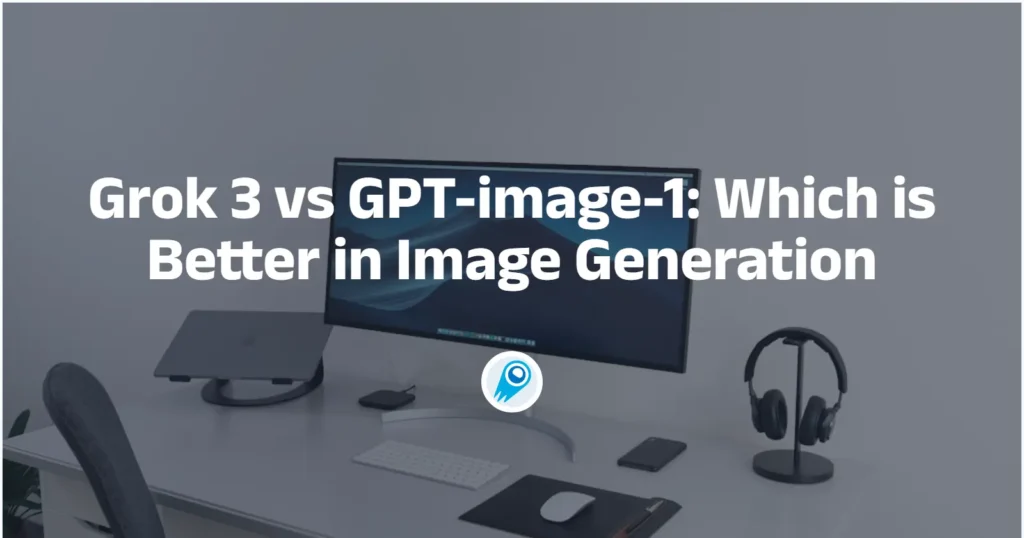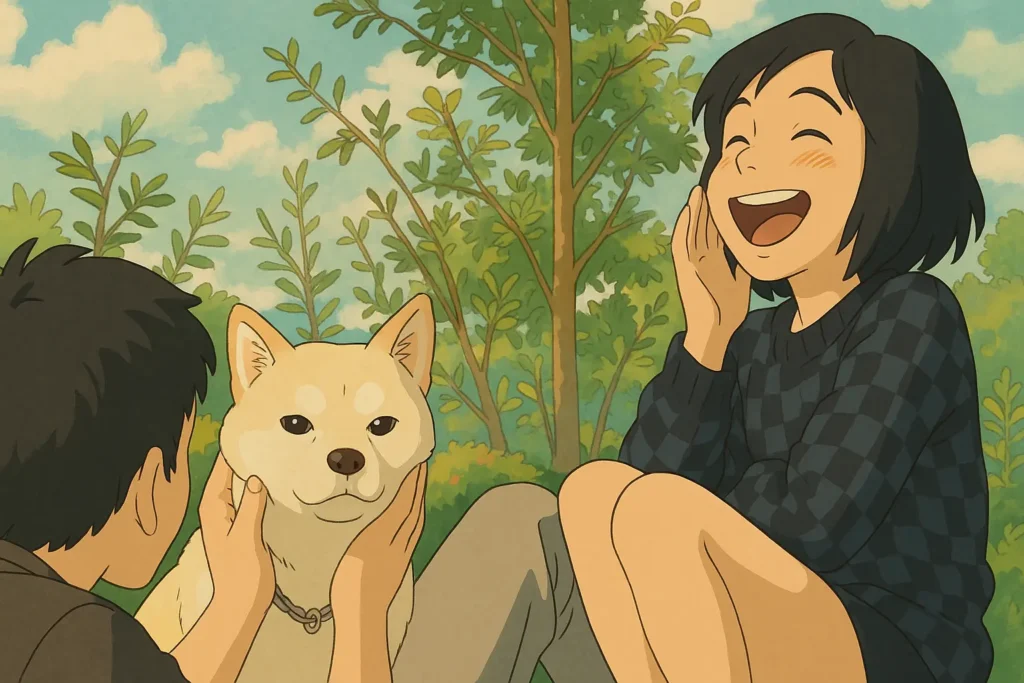Grok 3 vs GPT-image-1: Which is Better in Image Generation

Two of the most talked-about entrants are Grok 3, the latest iteration of xAI’s flagship model augmented by its “Aurora” image generator, and GPT-image-1, OpenAI’s first standalone image generation model integrated into its Images API. As of May 2025, both models offer compelling capabilities, yet they diverge significantly in architecture, performance, and application scenarios. This article delves into the key differences between Grok 3 (with Aurora) and GPT-image-1, examining their underlying technologies, output quality, integration options, pricing.
What is Grok 3 and how does it support image generation?
Grok 3 represents xAI’s third-generation large language model, unveiled in a beta preview on February 19, 2025. Trained on xAI’s Colossus supercluster with 10× the compute of its predecessor, Grok 3 excels at reasoning, mathematics, and coding tasks, surpassing prior state-of-the-art benchmarks in instruction-following and world knowledge.
How does Aurora integrate with Grok 3?
To extend Grok 3’s capabilities into the visual domain, xAI introduced Aurora, an autoregressive image generation model launched on December 09, 2024. Aurora generates images token-by-token, akin to how language models predict words, allowing for precise, sequential construction of visuals. Available initially on the X platform, Aurora exemplifies the fusion of generative text and image AI under the Grok umbrella .
What are the standout image generation features in Grok 3?
Grok 3’s image pipeline is powered by xAI’s proprietary Aurora engine. This backbone excels at photorealistic rendering of human subjects and real-world objects, and uniquely supports permissive content policies—allowing generation of celebrity likenesses, branded logos, and political figures, subject to xAI’s emerging policy guardrails . Key features include:
- Text-to-Image Synthesis: High-resolution outputs up to 1024×1024 pixels with detailed textures.
- Visual Analysis & Editing: Users can supply an existing image to receive targeted edits or stylistic transformations without rewriting the entire prompt .
- Automated Descriptive Titling: In the xAI API dashboard, each generated image is tagged with an AI-generated caption to facilitate asset management.
How does Grok 3 perform in quality and efficiency?
In benchmark tests, Aurora achieves class-leading scores on FID (Fréchet Inception Distance) and CLIP-based semantic alignment, particularly in photorealistic and portrait domains. While its reasoning-augmented approach yields superior handling of complex, multi-step prompts, it can introduce latency—especially in the “standard” model variant—where speed is traded for extra compute. Users can opt for a “fast” tier for lower latency at slightly reduced fidelity
What exactly is GPT-image-1 and how does it function?
GPT-image-1 marks OpenAI’s entrance into dedicated image generation via its standalone model, made publicly available through the Images API in late April 2025.
Which modalities does GPT-image-1 support?
- Text-to-image: Generate photorealistic images directly from textual descriptions.
- Image-to-image: Accept an initial image and produce variations or transformations.
- Zero-shot reasoning: Handle complex, multistep prompts without additional fine-tuning, leveraging GPT-image-1’s world knowledge embedded during pretraining .
OpenAI provides access to GPT-Image-1 through its Images API, enabling developers to integrate image generation capabilities into their applications. An example of using the API is as follows:
import requests
url = ""https://api.cometapi.com/v1/images/generations
headers = {
"Authorization": "Bearer YOUR_API_KEY",
"Content-Type": "application/json"
}
payload = {
"model": "gpt-image-1",
"prompt": "Please help me create a Ghibli image with a smiling girl and a dog",
"n": 1,
"size": "1024x1024"
}
response = requests.post(url, headers=headers, json=payload)
image_url = response.json()["data"][0]["url"]
print("Generated Image with Text URL:", image_url)Result:

What safeguards does GPT-image-1 employ?
OpenAI applies the same C2PA metadata tagging, configurable moderation, and privacy protections used in ChatGPT’s image features. Generated images carry provenance markers, and user data is not used for ongoing model training .
How do the architectures of Aurora and GPT-image-1 differ?
Understanding the architectural distinctions reveals why each model excels at certain tasks.
Autoregressive vs. diffusion-inspired generation
- Aurora (Grok 3’s image component) employs an autoregressive approach, predicting image “tokens” sequentially. This yields tight control over the generation process, enabling coherent conditional outputs tied to the model’s reasoning pipeline.
- GPT-image-1 likely leverages a latent diffusion or transformer-based diffusion-like method under the hood (consistent with OpenAI’s recent image research), facilitating rapid convergence to high-fidelity images through iterative noise reduction .
Training data and compute scale
- Aurora inherits Grok 3’s training on vast multimodal datasets, augmented by xAI’s proprietary crawls, executed on 200,000 Nvidia H100 GPUs for high-volume image demonstration tasks.
- GPT-image-1 was trained on a blend of licensed, public-domain, and curated web images with associated captions, using OpenAI’s supercomputing cluster—notably optimized for large-scale diffusion training—achieving precise, photorealistic outputs even on complex prompts.
How do image outputs compare in quality and style?
A head-to-head evaluation highlights each model’s strengths and limitations.
Photorealism and detail
- GPT-image-1 delivers high-resolution, photorealistic images with accurate textures, lighting, and fine-grained details. Users report lifelike portraits and studio-quality product shots with minimal prompt tinkering .
- Aurora, while capable of photorealism, excels in conceptual and diagrammatic visuals, leveraging Grok 3’s reasoning to annotate and structure images (e.g., technical schematics, flowcharts) more intuitively than traditional diffusion models.
Creative and stylistic flexibility
- GPT-image-1 offers extensive style controls—from “Studio Ghibli-inspired” to “ultra-modern architecture”—driven by a single “style” parameter in prompts, with consistent adherence to artistic constraints.
- Aurora emphasizes narrative coherence, making it ideal for storytelling sequences (comic strips, slide decks) where each panel’s context builds on Grok 3’s language-based reasoning .
Text consistency within images
- GPT-Image-1 demonstrates markedly improved fidelity when generating legible text—labels, signage, and embedded typography—due to specialized training on scene text datasets.
- Grok 3 can approximate textual content, but minor artifacts and misalignments can occur under complex layouts
Which integration ecosystems favor each model?
The choice between Grok 3/Aurora and GPT-image-1 often hinges on platform support and developer tooling.
Grok 3/Aurora integrations
- X (formerly Twitter): Native Aurora support allows content creators to generate and share images seamlessly within posts .
- xAI API Public Beta: Early access for developers to incorporate reasoning-driven image tasks into enterprise applications, with growing ecosystem plugins slated for Q3 2025.
GPT-image-1 integrations
- OpenAI Images API: Immediate global availability, with SDKs in Python, Node.js, and Java, plus built-in client libraries for rapid prototyping.
- Adobe Firefly: Users of Adobe’s creative suite can directly access GPT-image-1 within Firefly, alongside Google’s Imagen 3 and Adobe’s own models, under a unified credit system .
- Microsoft Azure: GPT-image-1 is also available through Azure OpenAI Service, offering enterprise-grade compliance and scalability.
How do pricing and access models differ?
Cost considerations and access tiers play a pivotal role in model selection.
Grok 3/Aurora costs
| Model Version | Grok 3 Beta | Grok-3-fast-beta |
| API Pricing in xAI | Input Tokens: $3 / M tokens | Input Tokens: $5 / M tokens |
| Output Tokens: $15/ M tokens | Output Tokens: $25/ M tokens | |
| Price in CometAPI | Input Tokens: $2.4 / M tokens | Input Tokens: $4/ M tokens |
| Output Tokens: $12 / M tokens | Output Tokens: $20 / M tokens | |
| model name | grok-3 grok-3-latest | grok-3-fast grok-3-fast-latest |
GPT-image-1 pricing
- Pay-as-you-go: $0.016 per image for 512×512 outputs, scaling with resolution (e.g., $0.04 for 1024×1024).
- Volume discounts: Available for large-scale deployments, with dedicated support plans via OpenAI and Azure .
- Free tier: New OpenAI developers receive $5 free credit, which can generate ~300 mid-resolution images .
What are the ethical and privacy considerations?
As image generation becomes ubiquitous, safe deployment and user trust are paramount.
Data privacy
- GPT-image-1 retains generated images with C2PA metadata, but does not use user-supplied content for training, mitigating privacy risks .
- Aurora integration with X stores images within user conversations, lacking fine-grained deletion controls—users must delete entire threads to remove images.
Content moderation
- Both platforms implement content filters to block explicit or harmful imagery. OpenAI’s safeguards extend to its API, while xAI leverages Grok 3’s reasoning to detect and refuse malicious or disallowed prompts.
Which model should you choose for your project?
When is Grok 3 the ideal choice?
- Research and Analysis: Its reasoning-driven architecture shines in scenarios requiring iterative exploration and context-aware synthesis.
- High-Fidelity Portraiture: Photo-realistic human subjects or detailed product visuals benefit from Aurora’s strengths.
- Permissive Content Needs: Projects that require celebrity likenesses or branded assets, subject to permissions, can leverage xAI’s broader policy allowances.
When does GPT-Image-1 excel?
- Rapid Prototyping: Its sub-second generation speeds and integration into Figma and Adobe support agile design workflows.
- Text-Heavy Designs: Marketing collateral, UI mockups, and infographics with embedded text achieve higher readability.
- Cost-Conscious Scaling: Uniform pricing and batch generation make it economical for high-volume image pipelines.
What does the future hold for AI image generation?
Both Grok 3 and GPT-Image-1 point toward a future where text, image, and reasoning seamlessly converge. We can expect:
- Unified Multimodal Agents: Blurring the lines between chat, code, and image tasks in single, context-aware assistants.
- On-Device and Edge Deployment: Lower-latency, privacy-preserving models running locally on devices.
- Enhanced Customization: User-trainable styles and domain-specific fine-tuning becoming accessible to smaller teams and individual creators.
Conclusion
Grok 3 (with Aurora) and GPT-image-1 each represent significant milestones in AI-powered image generation. Grok 3’s synergy of reasoning and autoregressive synthesis suits applications demanding conceptual coherence, technical illustration, or narrative-driven visuals. In contrast, GPT-image-1 shines in producing photorealistic, stylistically diverse images with robust API integration and enterprise support. Ultimately, the optimal choice depends on the specific use case—from technical documentation and social media content to large-scale creative campaigns. As both platforms evolve, users can anticipate ever more seamless, powerful, and ethically governed image generation tools to fuel their creative and professional endeavors.
Use Grok 3 and O3 in CometAPI
CometAPI offer a price far lower than the official price to help you integrate GPT-image-1 API (model : gpt-image-1) and Grok 3 API (model name: grok-3;grok-3-latest;), and you will get $1 in your account after registering and logging in! Welcome to register and experience CometAPI.
To begin, explore the model’s capabilities in the Playground and consult the API guide for detailed instructions. Note that some developers may need to verify their organization before using the model.


